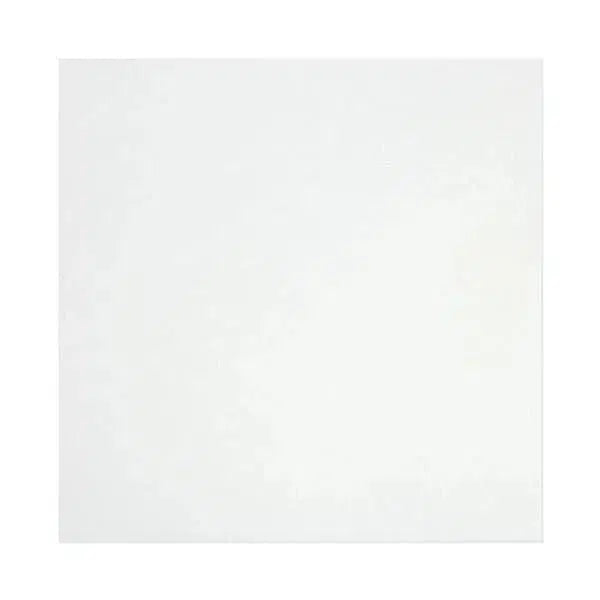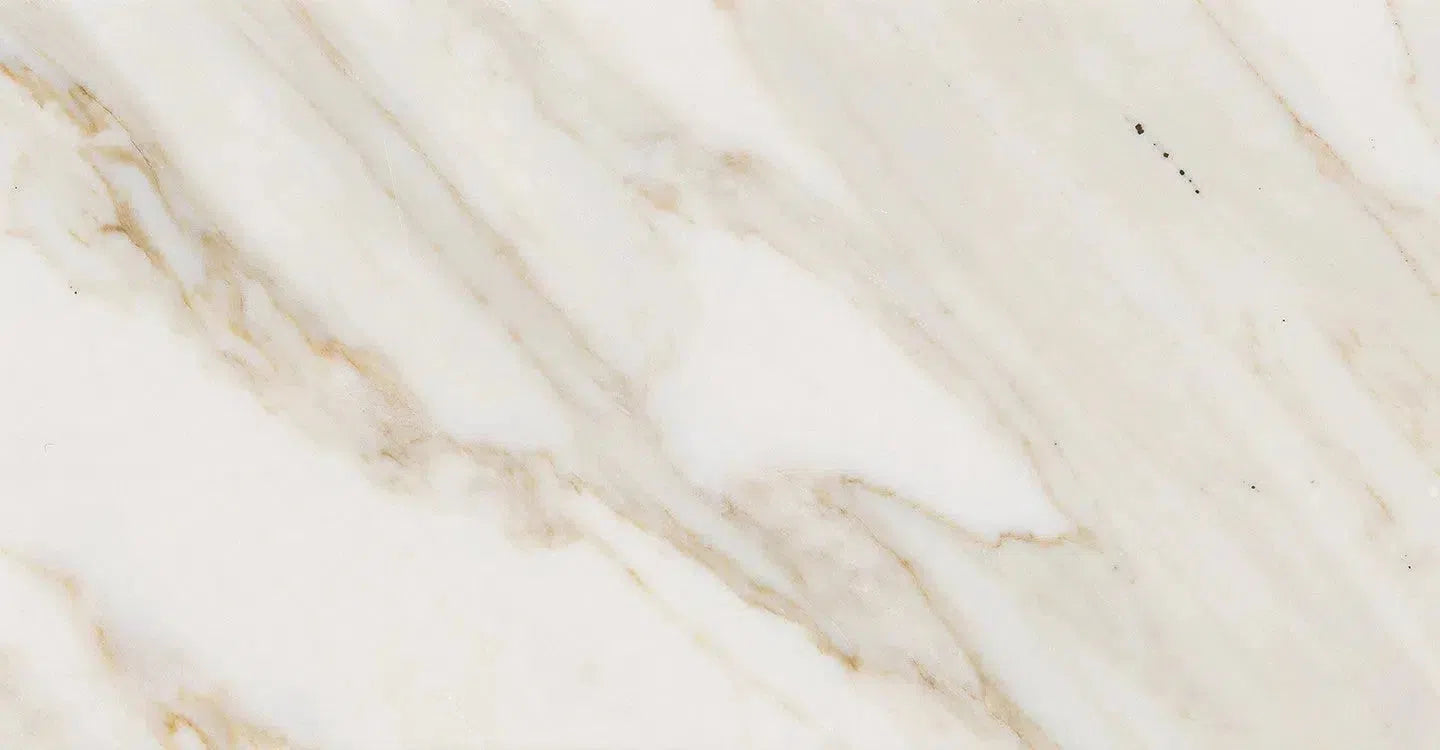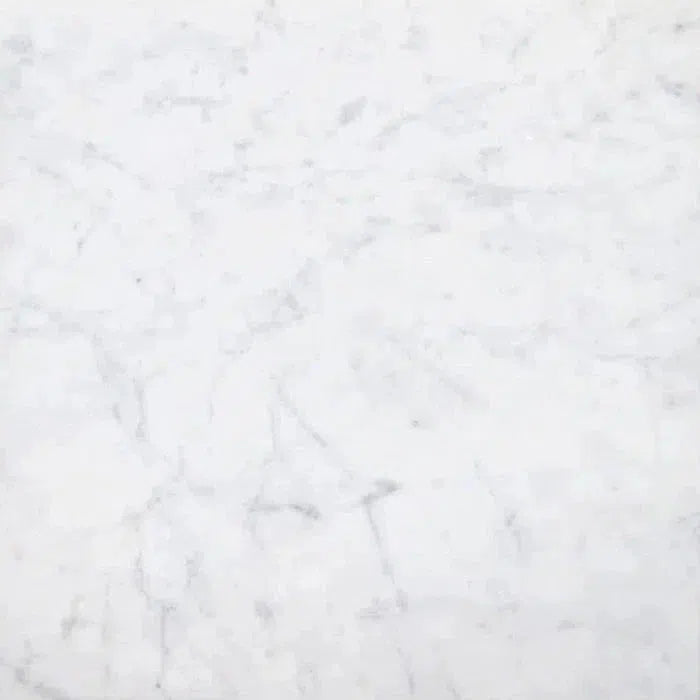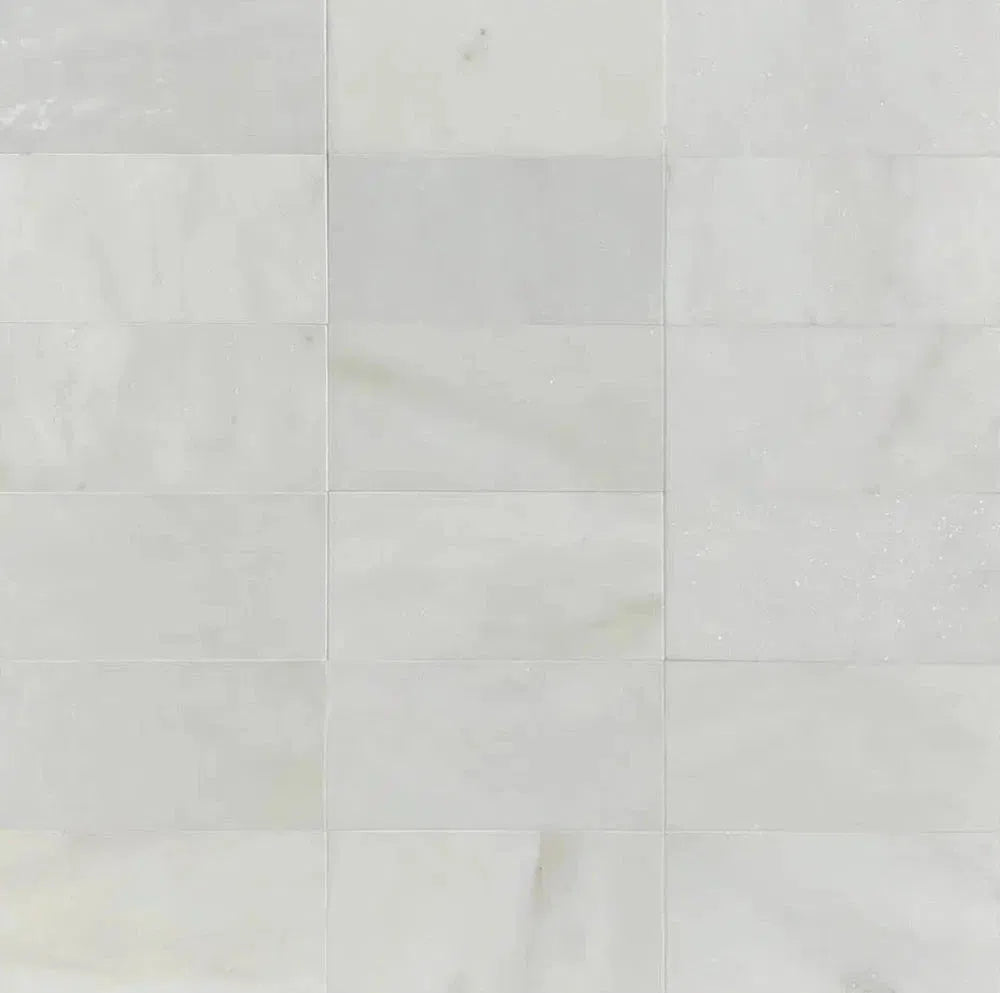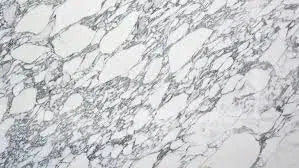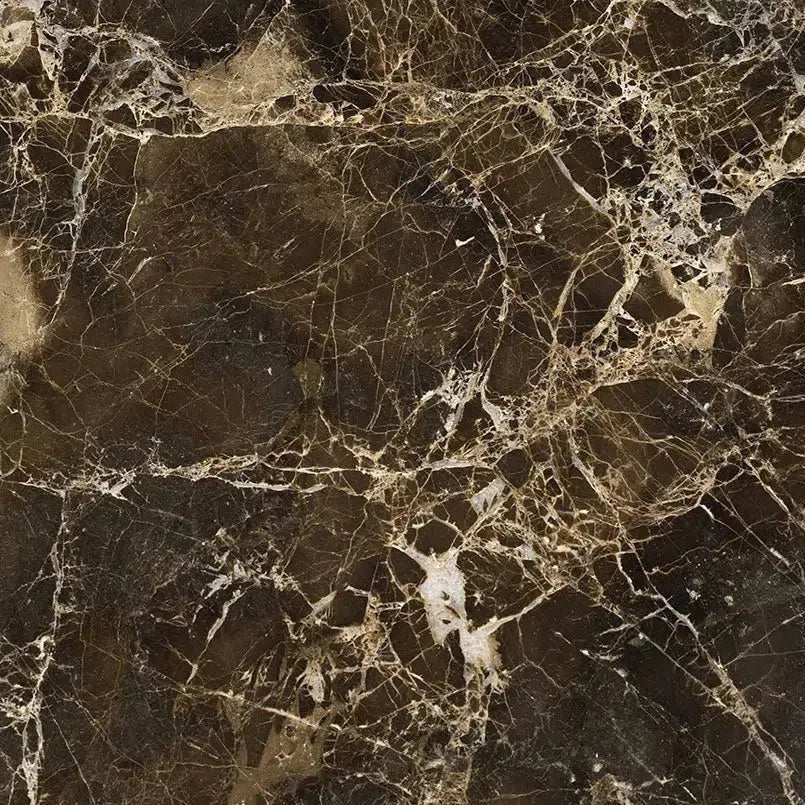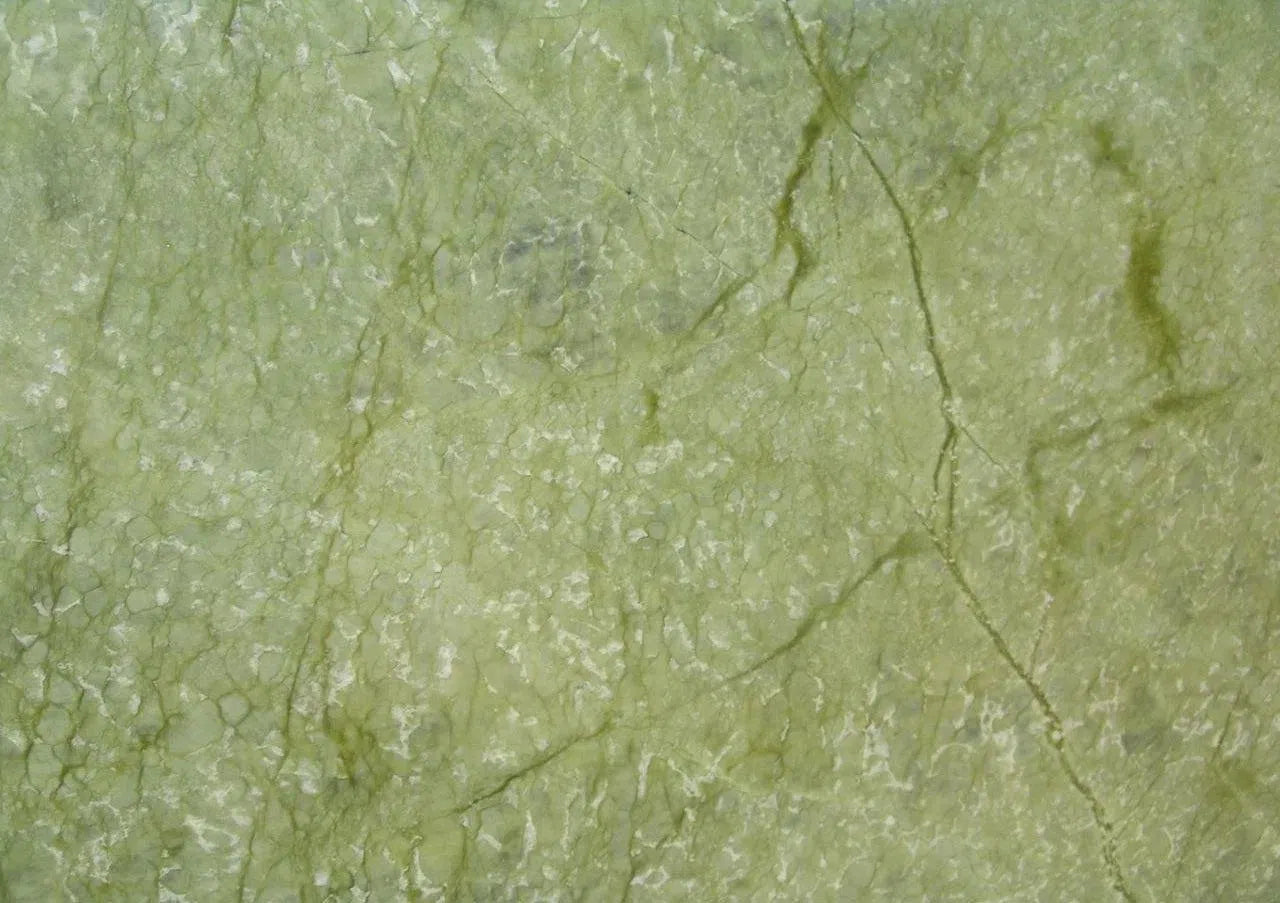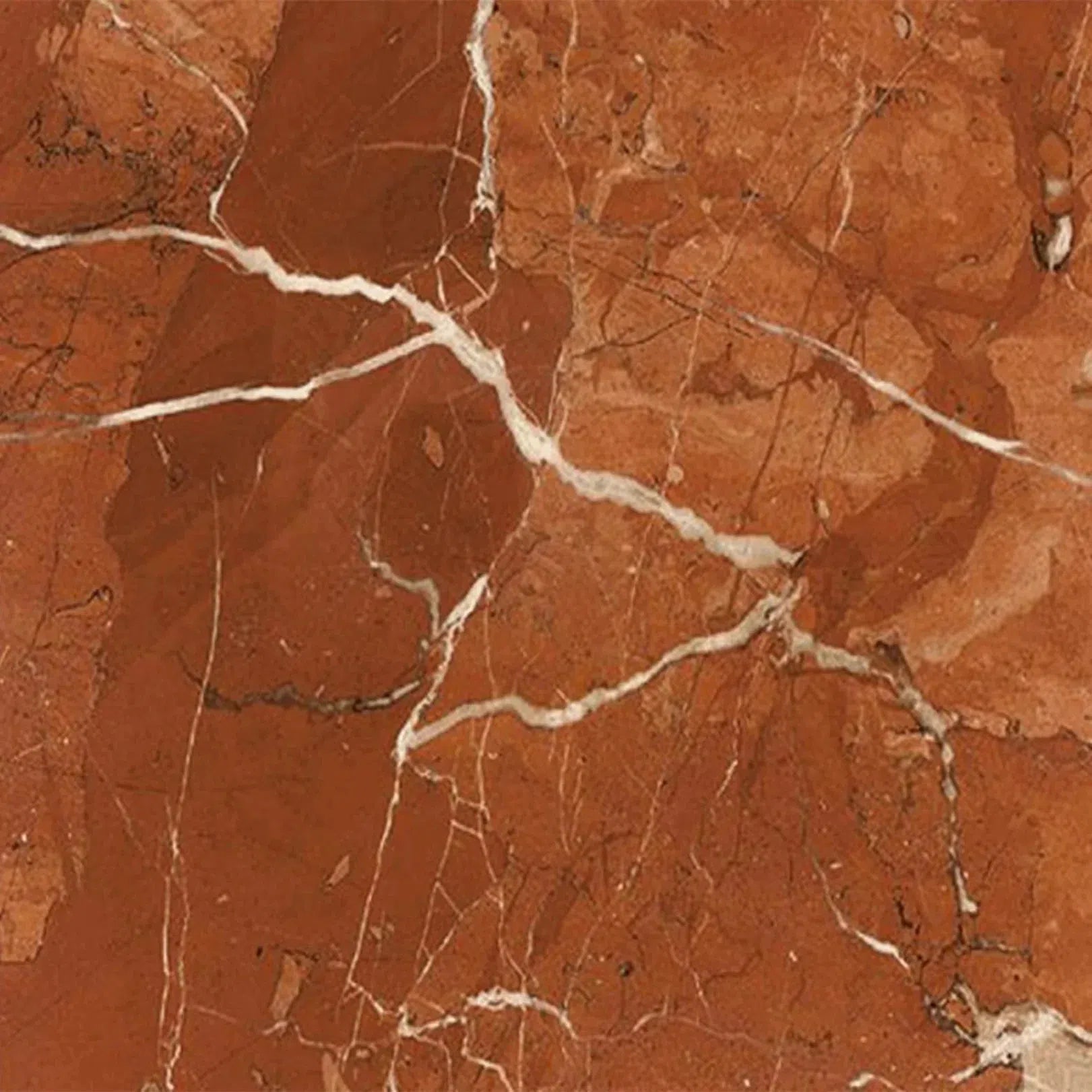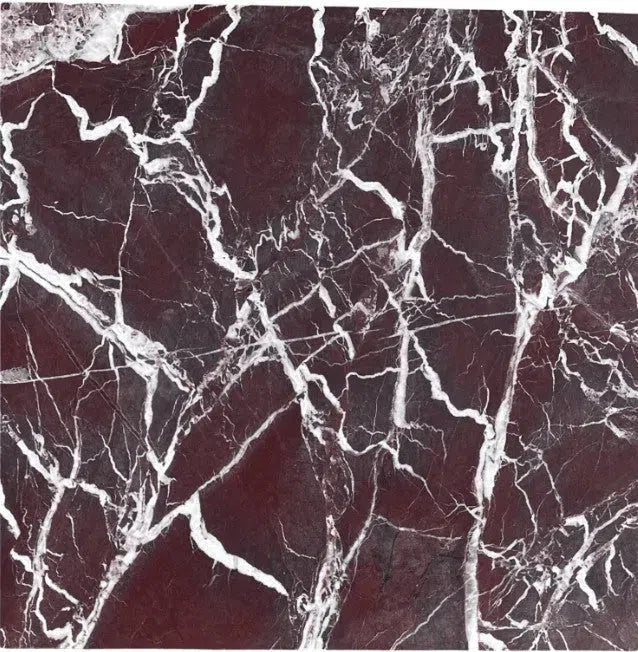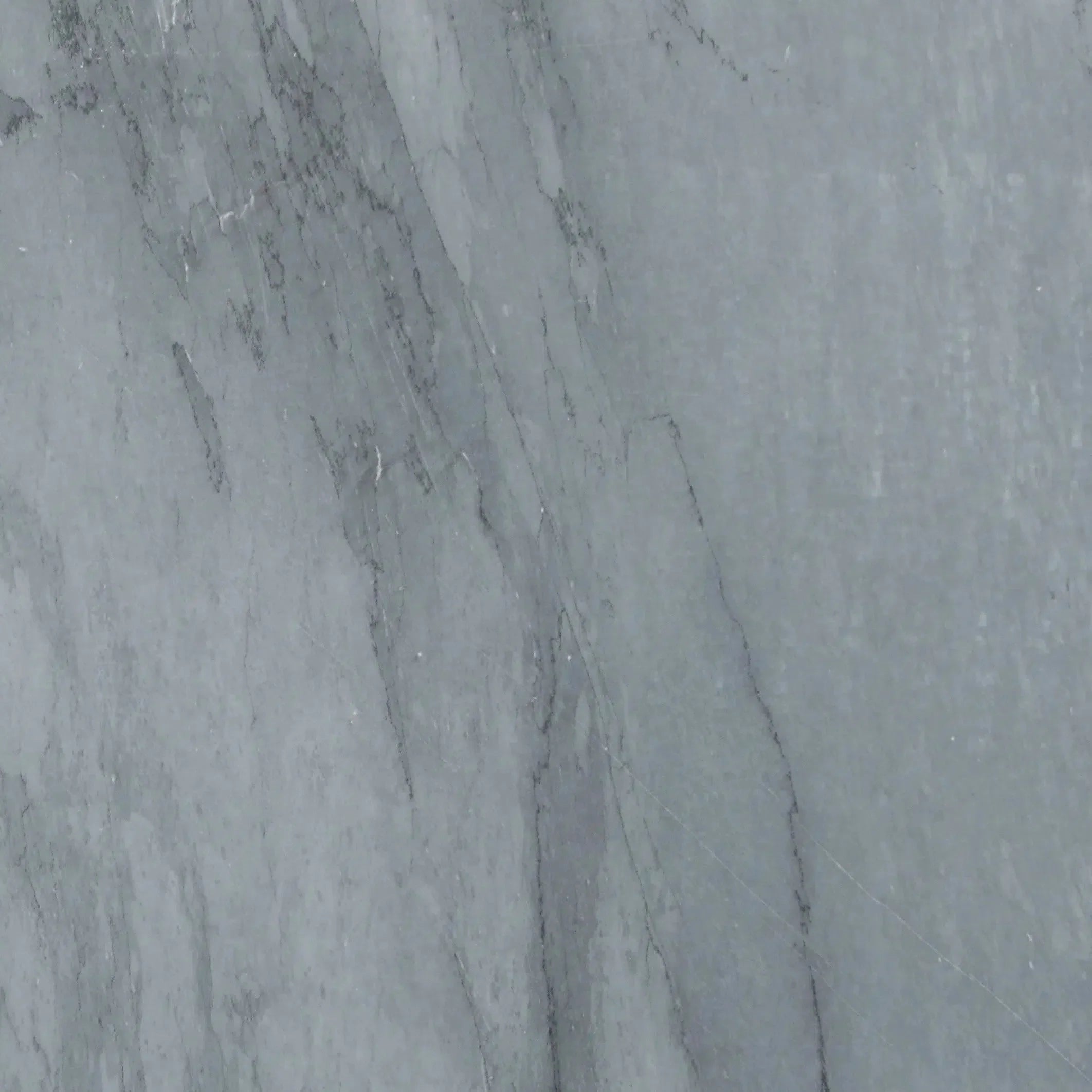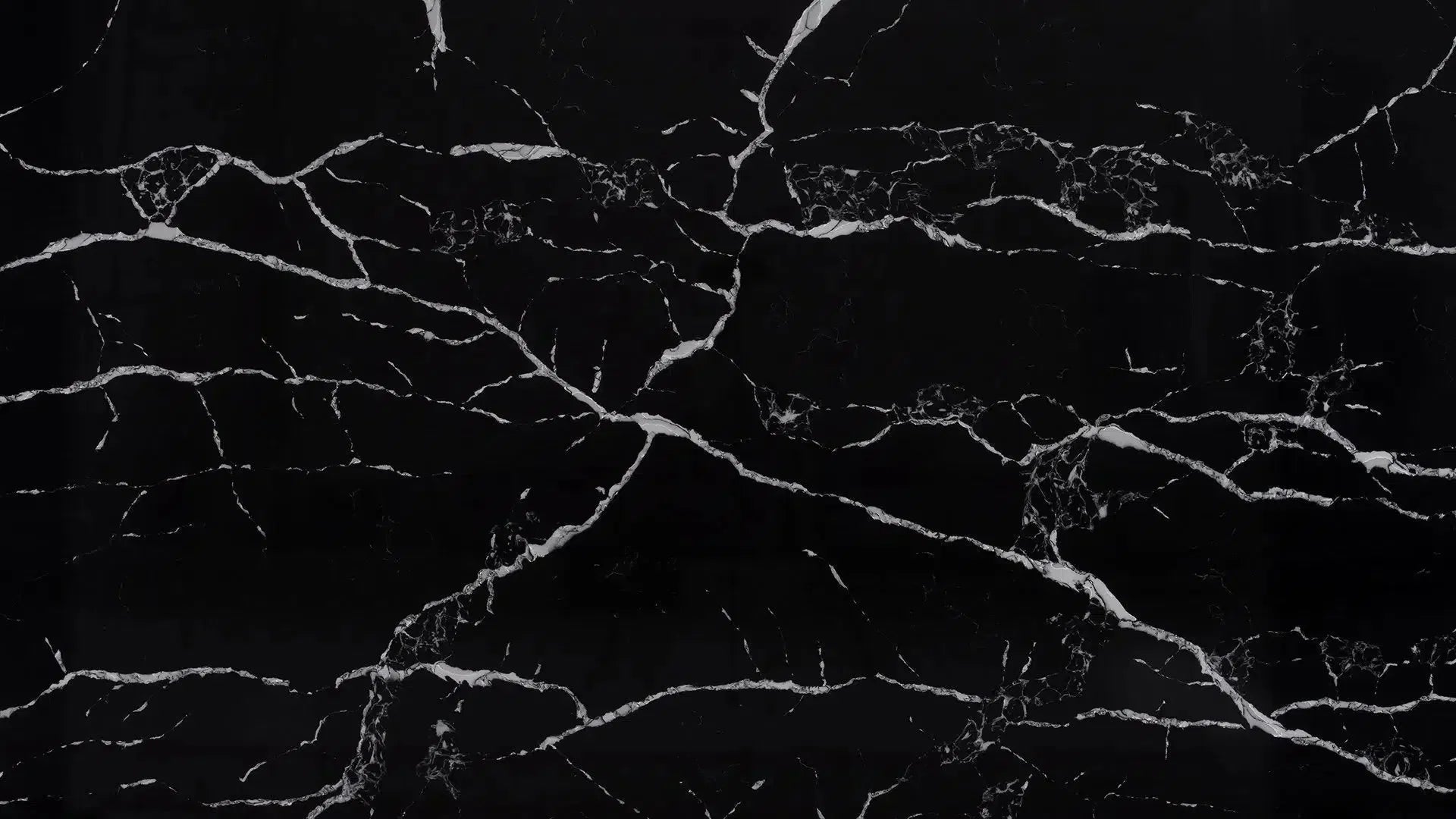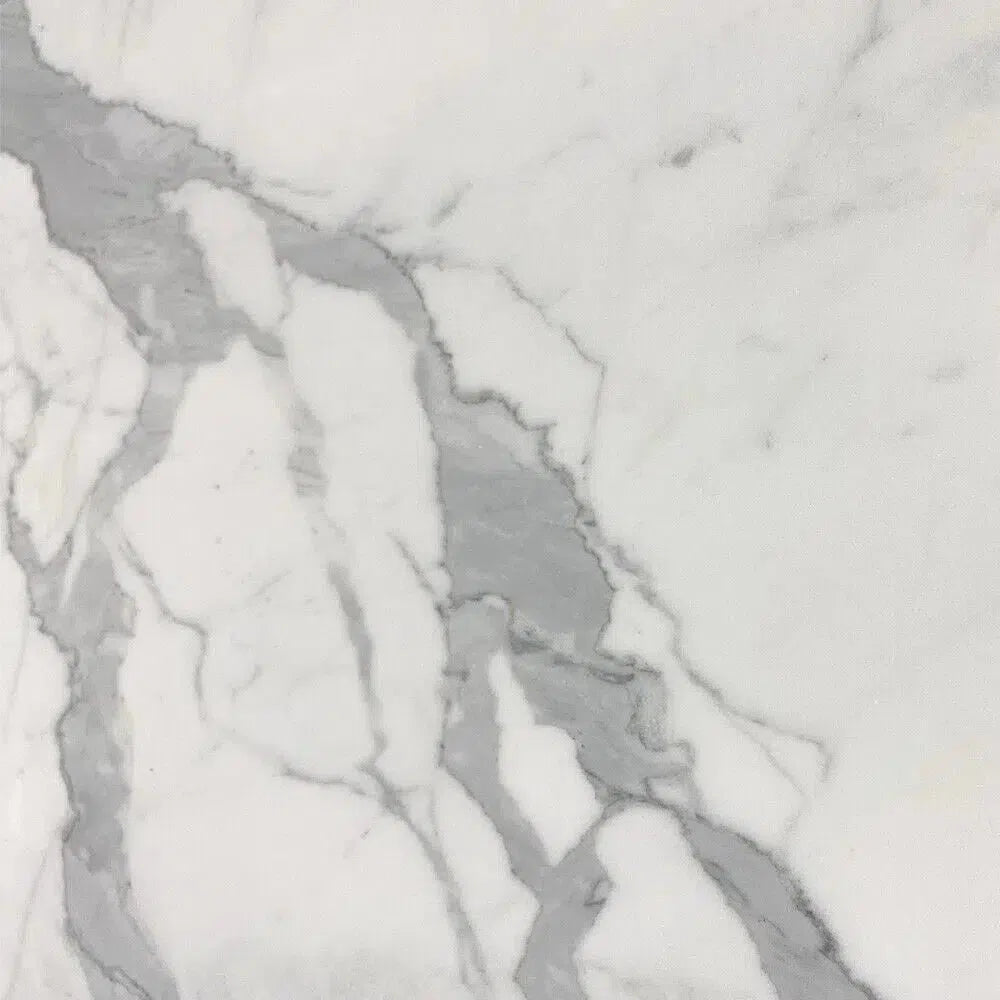Thinking about a little refresh for your place? You know, that feeling when you want something new but also something that feels like it's always been there? That's kind of what white arabesque tile does. It's got this cool shape, and when it's white, it just brightens everything up. Whether you're doing the kitchen, the bathroom, or even just a small entryway, this tile can make a big difference without being too much. It’s a classic look that fits right into modern homes, giving you that timeless vibe.
Key Takeaways
- White arabesque tile brings a timeless elegance that works well in today's homes.
- The arabesque shape itself has a long history and adds intricate detail.
- White stone, like marble or travertine, offers purity and can make spaces feel bigger.
- Choosing the right material, finish, and grout color is important for the final look.
- Proper installation and care will keep your arabesque tile looking great for years.
- American Stone Center focuses on high-quality, direct-sourced natural stone.
- This tile can be used in many areas, not just kitchens and bathrooms, to add character.
- Using white arabesque tile can make your home feel more sophisticated and potentially add value.
The Enduring Appeal Of White Arabesque Tile
A Classic Motif Reimagined
The arabesque pattern, with its flowing, intricate lines, has graced architecture and art for centuries. When rendered in white, this classic motif gets a modern update. It’s not just about tradition; it’s about taking something beautiful and making it feel fresh and relevant for today’s homes. Think of it as a timeless design that’s been given a new lease on life, ready to fit into contemporary spaces without feeling out of place.
The Versatility of White
White is, without a doubt, one of the most adaptable colors in design. It acts as a neutral backdrop, allowing other elements in a room to shine. With white arabesque tile, you get this incredible flexibility. It can lean into a minimalist aesthetic, provide a clean contrast in a more colorful space, or even add a touch of understated luxury. Its ability to work with almost any color palette is a huge part of its lasting appeal.
Creating a Sense of Space
White has a natural ability to make spaces feel larger and more open. This is especially true when using white tiles. The arabesque pattern, while detailed, doesn't typically feel heavy or overwhelming, particularly in lighter shades. When light bounces off the white surfaces, it helps to visually expand the room, making it feel airier and more expansive. It’s a smart choice for smaller rooms or areas where you want to maximize the feeling of openness.
Timeless Elegance for Any Room
What’s great about white arabesque tile is that it doesn’t really belong to one specific design trend. It has a certain elegance that transcends fads. You can find it looking perfectly at home in a sleek, modern kitchen, a spa-like bathroom, or even as a sophisticated accent in a living area. It brings a touch of class that feels permanent, not temporary.
The Subtle Sophistication of Arabesque
While bold patterns can be striking, there’s a quiet confidence in the arabesque design. The curves and interweaving lines offer visual interest without being loud. In white, this sophistication is even more pronounced. It’s a detail that people notice and appreciate for its artistry, but it doesn’t demand all the attention. It adds a layer of refined taste to a space.
Why White Arabesque Tile Endures
Several factors contribute to the lasting popularity of white arabesque tile. Its historical roots give it a sense of gravitas, while its clean, bright color makes it feel modern. The pattern itself is visually engaging without being busy. Plus, it pairs well with so many different materials and colors. It’s a design that offers both beauty and practicality, a combination that’s hard to beat.
A Foundation for Diverse Decor Styles
Think of white arabesque tile as a fantastic starting point for your design. Whether you’re aiming for a modern farmhouse look, a chic bohemian vibe, or a classic, traditional feel, this tile can adapt. It’s a neutral base that lets you play with furniture, accessories, and other decor elements. You can change the look of your room over time without needing to change the tile itself, which is a big plus for long-term design planning.
Transforming Spaces With White Arabesque
White Arabesque tile isn't just a surface covering; it's a design element that can completely change how a room feels and looks. Its unique shape and the clean, bright nature of white work together to make spaces feel bigger, lighter, and more sophisticated. Whether you're updating a kitchen, creating a spa-like bathroom, or adding a touch of class to an entryway, this tile offers a way to bring a sense of calm and refined beauty.
Elevating Kitchen Backsplashes
A white Arabesque backsplash can turn a functional kitchen area into a focal point. It provides a clean, bright backdrop that complements cabinetry and countertops, making the whole kitchen feel more open and inviting. The intricate pattern adds visual interest without overwhelming the space, making it a great choice for both modern and traditional kitchens.
Creating Luxurious Bathroom Retreats
Imagine stepping into a bathroom that feels like a personal spa. White Arabesque tile can help achieve this. Used on shower walls, floors, or as a decorative accent, it brings a sense of purity and tranquility. The subtle curves of the Arabesque shape, combined with the clean white finish, create a calming atmosphere perfect for relaxation. It pairs beautifully with natural wood tones or sleek chrome fixtures.
Adding Character to Entryways
The entryway is the first impression of your home. Using white Arabesque tile here can make a significant statement. It adds a touch of elegance and warmth, welcoming guests into your space. It's a durable option that can handle foot traffic while still looking beautiful, setting a sophisticated tone from the moment someone walks in.
Designing Serene Living Areas
White Arabesque tile can also find a place in living areas, perhaps as a feature wall or a decorative surround for a fireplace. It introduces a unique pattern and a sense of calm that can make a living room feel more inviting and stylish. It acts as a beautiful, understated canvas for your furniture and decor.
Enhancing Outdoor Living Spaces
While often thought of for interiors, certain types of white Arabesque tile can also work in covered outdoor areas, like patios or sunrooms. It can bring a touch of indoor elegance to an outdoor setting, creating a beautiful transition space. Always check with a professional about suitability for outdoor use and exposure.
The Impact on Natural Light
White surfaces are known for reflecting light, and white Arabesque tile is no exception. Its bright color bounces natural light around a room, making it feel larger and more airy. This is particularly beneficial in smaller rooms or those with limited natural light, helping to create a more open and cheerful environment.
A Statement of Refined Taste
Choosing white Arabesque tile is a way to show an appreciation for detail and classic design. It's a choice that speaks to a refined aesthetic, offering a look that is both current and timeless. It’s a material that adds a subtle but noticeable layer of sophistication to any project.
Understanding The Arabesque Design
Origins and Historical Significance
The Arabesque design isn't just a pretty pattern; it has a rich history. It really started to take shape around the 8th century. Islamic builders were looking for ways to decorate buildings without using images of people or animals, which wasn't common in their religious art. So, they turned to complex, flowing patterns. These designs evolved over time, picking up influences from different places. Think of places like Morocco, Turkey, and Lebanon – they all have their own take on Arabesque, showing how it adapted to local styles and traditions. It's a design that has traveled and changed, but its core idea remains. These intricate designs have a long story to tell.
The Intricate Patterns Explained
What makes an Arabesque pattern? It's all about repeating, interwoven lines and shapes. You'll often see floral elements, vines, and leaves, but they're stylized and abstract. It's not like a realistic drawing of a flower; it's more of a flowing, organic feel. These patterns can be quite complex, with layers of detail that draw your eye in. They create a sense of movement and rhythm, almost like a visual melody. It’s this complexity that gives the design its depth and appeal.
Variations in Arabesque Styles
While the core idea of Arabesque is consistent, there are many ways it shows up. Some patterns are more geometric, with sharp lines and angles, while others are very fluid and curved, like vines winding around. You might see simpler versions that are easier to follow, or incredibly detailed ones that are a real challenge to take in all at once. The specific motifs used can also vary, from stylized leaves and flowers to more abstract, scroll-like forms. This variety means there's an Arabesque style for almost any taste or project. Regional styles show this diversity well.
How The Shape Influences Perception
The shape of Arabesque tiles themselves plays a big role. They're often elongated with pointed ends, resembling a petal or a teardrop. This shape naturally guides the eye along its length, creating a sense of flow. When laid together, these tiles can create a continuous, almost wave-like effect across a surface. This visual movement can make a space feel larger or more dynamic. It’s a clever use of form to affect how we perceive the area.
The Flow and Movement of the Design
One of the most captivating things about Arabesque is its sense of movement. The patterns aren't static; they seem to twist, turn, and weave. This creates a dynamic visual experience. It’s like looking at a dance captured in tile form. This flow can make a room feel more alive and engaging. It’s a design that doesn’t just sit there; it draws you in and keeps your attention.
A Blend of Geometric and Organic Forms
Arabesque is interesting because it mixes two different kinds of beauty. You have the precision and order of geometric shapes, but they're softened and made more natural with organic, flowing lines. It’s like nature’s patterns, like leaves and vines, were translated into a more structured, artistic language. This combination is what gives Arabesque its unique character – it’s both orderly and wild, precise and flowing.
The Artistry Behind Each Tile
Creating Arabesque tile isn't just about mass production; there's a real artistry involved. Whether it's carved into stone or formed in ceramic, each tile is a small piece of art. The skill required to create these intricate patterns, especially in natural stone, is considerable. It speaks to a tradition of craftsmanship that values detail and beauty. When you choose Arabesque, you're often choosing a piece of that artistic heritage.
The Pristine Beauty Of White Stone
The Purity of White Marble
White marble has a certain something, doesn't it? It feels clean, almost sacred. Think of those classic sculptures – pure white marble, looking as fresh today as they did centuries ago. It brings that same timeless quality to your home. We're talking about a material that's been admired for ages, and for good reason. It has a subtle elegance that just can't be faked. When you choose white marble, you're not just picking a tile; you're bringing a piece of history and art into your space. It’s a statement of refined taste, a nod to enduring beauty.
The Subtle Warmth of White Travertine
While marble often gets the spotlight for its bright purity, white travertine offers a different kind of charm. It has these natural pits and pores, which give it a softer, more grounded feel. It’s not as stark as some marbles, bringing a gentle warmth that can make a room feel more inviting. Imagine a kitchen backsplash or a bathroom floor in white travertine – it’s sophisticated but also feels really comfortable and lived-in. It’s a great choice if you want that bright, airy look without it feeling too cold or formal. It’s a material that feels both luxurious and approachable.
Achieving a Bright and Airy Atmosphere
White stone, in general, is a magician when it comes to making spaces feel bigger and brighter. It bounces light around the room, making even small areas feel more open and expansive. This is especially true for white Arabesque tiles. Their shape, combined with the light-reflecting properties of white stone, can really transform a room. It’s like opening up the windows and letting the sunshine flood in, even on a cloudy day. This effect is fantastic for areas that don't get a lot of natural light, or for smaller rooms where you want to create a sense of more space.
The Reflective Qualities of White
White surfaces have a natural ability to reflect light. This isn't just about making a room brighter; it's about how the light plays across the surface. With white stone, especially polished finishes, you get a subtle sheen that can add depth and dimension. It catches the light in different ways throughout the day, giving the stone a dynamic quality. This reflectivity can make a space feel more alive and visually interesting, without adding any clutter. It’s a quiet kind of beauty that relies on the interplay of light and material.
Pairing White With Other Colors
One of the best things about white stone is how incredibly versatile it is when it comes to color. It’s like a blank canvas for your decor. You can pair it with almost anything. Want a dramatic look? Try it with deep blues or blacks. Prefer something soft and serene? Combine it with pastels or other light neutrals. Even bold, vibrant colors pop beautifully against a white stone backdrop. This makes white Arabesque tile a smart choice because it won't clash with your furniture or accessories, and it allows you to change your decor style over time without needing to change the tile.
Maintaining The Luster of White Surfaces
Keeping white stone looking its best is pretty straightforward, but it does require a little attention. The key is regular, gentle cleaning. Avoid harsh chemicals or abrasive scrubbers, as these can dull the finish over time. A pH-neutral cleaner and a soft cloth are usually all you need for daily upkeep. For tougher spots, a specialized stone cleaner can do the trick. Sealing the stone periodically also helps protect it from stains and moisture, making cleanup even easier. With a little care, your white stone will maintain its pristine look for years.
The Psychological Impact of White
There's a reason white is so often associated with peace and clarity. Psychologically, white can have a calming effect. It’s clean, pure, and uncluttered, which can help reduce stress and create a sense of order. In a home, this translates to a more tranquil environment. Using white stone, especially in busy areas like kitchens or bathrooms, can help create a sanctuary-like feel. It promotes a sense of calm and well-being, making your home a more restful place to be. It’s a subtle but powerful way to influence the mood of your living space.
Choosing The Right White Arabesque Tile
Selecting the perfect white arabesque tile can feel like a big decision, but it doesn't have to be overwhelming. Think of it as picking the right outfit for a special occasion – you want it to look great and feel right for the space. There are a few things to consider that will help you make a choice you'll love for years to come.
Material Considerations: Marble vs. Travertine
When you're looking at white arabesque tiles, you'll often see them made from marble or travertine. Both are natural stones, which is fantastic, but they have different personalities. Marble, like Carrara or Calacatta, tends to have more dramatic veining and a classic, luxurious feel. It's often polished to a high shine. Travertine, on the other hand, has a more earthy, subtle look with natural pits and filled holes, giving it a softer, more rustic charm. It can be tumbled or honed for a matte finish. Your choice here really sets the tone for the room.
Finish Options: Polished, Honed, or Tumbled
Beyond the material, the finish of the tile makes a big difference. A polished finish is super shiny and reflects light, making a space feel brighter and more open. It's very elegant but can show water spots or smudges more easily. Honed finishes are smooth but have a matte appearance, offering a more subdued look and better hiding minor imperfections. Tumbled finishes have a worn, aged look, with softened edges, perfect for a more relaxed or traditional style. Each finish changes how the white tile looks and feels.
Understanding Tile Size and Scale
Don't forget about the size of the tiles! Smaller arabesque tiles can create a more intricate, detailed pattern, which is great for smaller areas or when you want a lot of visual interest. Larger tiles might make a space feel more expansive, with fewer grout lines to break up the pattern. Consider the overall size of the room you're tiling. A tiny bathroom might look better with smaller tiles, while a large kitchen backsplash could handle larger pieces.
Grout Color Strategies for White Tile
The grout color is a small detail that has a huge impact. For a really clean, almost seamless look, matching the grout to the white tile is a popular choice. This makes the arabesque pattern really stand out as a unified surface. If you want the individual tile shapes to be more defined, a contrasting grout color, like a light grey or even a soft beige, can highlight the arabesque design. It's a subtle way to add another layer of visual interest.
Considering The Lighting in Your Space
How much natural light does your room get? This is important! In a bright, sunny room, a polished white tile will really sparkle. In a dimmer space, a honed or tumbled finish might be better to avoid glare and create a softer atmosphere. Think about artificial lighting too – how will the tile look under lamps or overhead lights in the evening?
Samples: A Crucial Step in Selection
Seriously, get samples. It’s like test-driving a car before you buy it. Seeing the tile in your own space, with your own lighting, and next to your existing colors is the best way to know if it's the right fit. You can order samples directly from us, and it’s a small step that prevents big regrets later. It helps you feel the texture and see the true color.
Matching Your Design Aesthetic
Finally, think about your overall style. Are you going for a modern, minimalist look? A classic, elegant feel? Or maybe something more rustic and cozy? White arabesque tiles are incredibly versatile, but the material, finish, and even the grout color can push the design in different directions. We have a wide selection of handpicked A+ top-quality natural stone to fit any vision. Our experts are always available to help you find the perfect match for your project nationwide.
Installation And Care For Your Tiles
Getting your beautiful white Arabesque tiles installed and keeping them looking great is pretty straightforward, but there are a few things to keep in mind. It’s not like just slapping up some drywall, you know? Proper installation makes a huge difference in how the final look comes together, and taking care of them afterwards means they’ll stay stunning for ages.
Professional Installation Best Practices
While some folks might think about tackling this themselves, for a truly polished look, especially with intricate patterns like Arabesque, hiring a pro is often the way to go. They know the tricks of the trade.
- Surface Preparation: A clean, level, and dry subfloor is non-negotiable. Any bumps or unevenness will show through and can cause issues down the line.
- Layout Planning: A good installer will dry-lay the tiles first to figure out the best pattern, minimize awkward cuts, and ensure the design flows nicely across the entire area.
- Adhesive Application: Using the right type of adhesive for your specific tile and substrate is key. They'll make sure it's spread evenly with the correct trowel size.
- Grouting: Waiting for the adhesive to cure properly before grouting is important. The grout color choice also matters a lot with white tiles – more on that later!
- Sealing: Most natural stone tiles, especially marble and travertine, need to be sealed after installation to protect them from stains and moisture.
DIY Installation Considerations
If you're feeling adventurous and have some experience with tiling, a DIY installation can be rewarding. Just be prepared for it to take longer than you think.
- Tools: You'll need more than just a tile cutter. Think about a wet saw for precise cuts, a good notched trowel, spacers, a level, and safety gear like gloves and eye protection.
- Patience: Rushing is the enemy of good tile work. Take your time with each step, especially the layout and cutting.
- Learning Curve: Watch plenty of videos and read up on techniques. Don't be afraid to practice cuts on a few spare tiles before you start on the main area.
Proper Sealing for Longevity
Sealing your white Arabesque tiles is a vital step to protect their pristine beauty. It creates a barrier against spills and stains, which is especially important for lighter-colored natural stone.
- When to Seal: Seal after installation once the adhesive and grout are fully cured (usually 24-72 hours). You'll also need to reseal periodically, typically every 1-3 years depending on traffic and use.
- Choosing a Sealer: Opt for a high-quality penetrating sealer designed for natural stone. There are impregnators that don't change the look, and others that can add a slight sheen.
- Application: Apply the sealer evenly with a clean cloth or applicator pad, following the manufacturer's instructions. Usually, it involves applying, letting it soak in, and then wiping off any excess before it dries.
Don't skip the sealing step. It's your tiles' first line of defense against everyday life, keeping them looking fresh and new for years to come.
Daily Cleaning Routines
Keeping your tiles clean doesn't have to be a chore. A simple routine will keep them looking their best.
- Sweep or Vacuum: Regularly sweep or vacuum (with a soft brush attachment to avoid scratching) to remove dust and grit.
- Wipe Down: For daily cleaning, use a damp mop with plain water or a pH-neutral cleaner specifically made for natural stone. Avoid harsh chemicals or acidic cleaners like vinegar or lemon juice, as they can etch the stone.
- Spills: Wipe up spills immediately. The longer they sit, the more likely they are to stain, especially on porous stones.
Tackling Stains on White Surfaces
Accidents happen, but most stains on white Arabesque tile can be managed with the right approach.
- Identify the Stain: Knowing what caused the stain helps determine the best treatment. Is it oil-based, organic, or rust?
- Poultice Power: For tougher stains, a poultice can work wonders. You can buy commercial stone poultices or make your own using an absorbent material (like diatomaceous earth or baking soda) mixed with a cleaning agent suitable for the stain type. Apply it to the stain, cover with plastic wrap, and let it sit for 24-48 hours before removing.
- Professional Help: If you're unsure or dealing with a particularly stubborn stain, it's always best to consult a stone care professional.
Protecting Your Investment Over Time
Think of your tile installation as an investment. A little ongoing attention goes a long way.
- Use Mats: Place doormats at entrances to trap dirt and grit before it gets tracked onto your tiles.
- Furniture Pads: Use felt pads under furniture legs to prevent scratches.
- Regular Inspections: Periodically check your grout and sealant. Re-grouting or re-sealing might be needed every few years to keep everything protected and looking sharp.
The American Stone Center Advantage
Direct Importer For Unmatched Value
When you choose American Stone Center, you're cutting out the middlemen. We're a direct importer, which means we source our beautiful natural stone straight from the quarries. This direct connection helps us keep prices fair and quality consistent. You get authentic, top-tier stone without the extra markup.
Handpicked A+ Top-Quality Natural Stone
We don't mess around with just any stone. Our team handpicks every single piece, looking for that A+ quality. We're talking about stone that's truly special, not just your average material you find everywhere. This commitment to premium quality is what sets us apart.
Commitment to Premium, Not Commercial Grade
Forget about commercial grade. At American Stone Center, we only deal in premium natural stone. We believe your project deserves the best, and that means stone with character, durability, and a look that stands out. You won't find lower-grade materials here; we focus solely on the exceptional.
Nationwide Shipping With Insured Delivery
No matter where you are in the U.S., we can get our stunning stone to you. We ship nationwide, and every shipment is insured. This means your order is protected from the moment it leaves us until it arrives at your door. We handle the logistics so you can focus on your project.
Expert Guidance For Confident Choices
Picking the right stone can feel like a big decision, and that's okay. Our team is here to help. We have folks who know their marble and travertine inside and out. They can answer your questions and guide you toward the perfect stone for your specific needs, making sure you feel good about your choice.
Fast Processing and Often Same-Day Shipping
We know you're eager to get started on your project. That's why we're all about speed. A huge percentage of our orders get processed and shipped out within hours, often on the same day. You can count on us for quick, reliable service to keep your project moving.
Your Trusted Partner in Natural Stone
We aim to be more than just a supplier; we want to be your go-to partner for all things natural stone. Our focus on quality, direct sourcing, and excellent customer service means you can trust us to provide beautiful, durable stone for any project. We're here to help you create something amazing.
Designing With White Arabesque Tile
Creating a Cohesive Design Scheme
When you decide to use white arabesque tile, think about the whole room. It’s not just about the tile itself, but how it fits with everything else. You want a look that feels put together, not random. This means considering the colors of your walls, furniture, and even the flooring in adjacent areas. A cohesive scheme makes a space feel calm and intentional. For example, if you have warm wood floors, you might want to pick a white arabesque with a slightly warmer undertone, or balance it with cooler accents elsewhere. The goal is a harmonious blend where the tile feels like a natural part of the design, not an afterthought.
Balancing Texture and Pattern
White arabesque tile brings a distinct pattern with its shape. To keep things interesting without being overwhelming, play with different textures in your space. Think about a rough-hewn wooden table, a plush velvet sofa, or even a woven rug. These textures add depth and prevent the room from feeling flat. The intricate shape of the arabesque itself adds visual interest, so you don't need to go overboard with other busy patterns. A good balance makes the room feel layered and inviting.
The Role of Accent Pieces
Accent pieces are your chance to inject personality and color into a space dominated by white arabesque tile. These could be anything from colorful throw pillows and artwork to a statement vase or a unique lamp. They draw the eye and break up the expanse of white, adding character. Even small touches can make a big difference. Consider how these accents will interact with the tile's shape and finish. A pop of deep blue or emerald green can look stunning against a crisp white background.
Incorporating Natural Elements
Bringing in elements from nature can really complement the organic flow of arabesque designs. Think about plants, wood accents, or even natural stone elements in other parts of the room. These additions can soften the look and add a sense of tranquility. For instance, a few potted plants on a shelf can bring life to a wall tiled with white arabesque. This approach ties the interior design back to the natural origins of the stone itself, creating a grounded feel.
Modern Minimalist Interpretations
White arabesque tile can absolutely fit into a modern minimalist aesthetic. The key here is simplicity and clean lines. Pair the tile with sleek, unadorned furniture and a neutral color palette. Avoid clutter and keep decorative items to a minimum. The geometric nature of the arabesque shape, when used in a clean white finish, can actually lend itself well to a modern look. It provides a subtle pattern without being fussy. Consider using it as a backsplash in a kitchen with flat-panel cabinets for a sophisticated, uncluttered appearance.
Classic and Traditional Applications
Of course, white arabesque tile has a long history and fits beautifully into classic and traditional interiors. Here, you can lean into more ornate details. Think about pairing the tile with detailed moldings, antique furniture, or rich fabrics like damask or brocade. The tile itself adds a touch of old-world charm. It works wonderfully in bathrooms with clawfoot tubs or kitchens with shaker-style cabinets. This style often embraces a sense of history and timeless elegance.
Achieving a Luxurious Feel
To create a truly luxurious feel with white arabesque tile, pay attention to the details. High-quality materials are a must. Consider the finish of the tile – a polished marble can add a high-end sheen. The grout color also plays a role; a closely matched grout can create a more seamless, upscale look. Accent lighting can highlight the tile's shape and texture, adding drama. The overall impression should be one of refined elegance and meticulous attention to detail. When you're looking for premium materials, remember that American Stone Center offers handpicked A+ top-quality natural stone, avoiding commercial grades to ensure that luxury feel for your projects nationwide.
The Synergy with Wood Elements
Wood and white arabesque tile are a match made in design heaven. The warmth and natural grain of wood provide a beautiful contrast to the cool, clean look of white tile. This pairing works in almost any setting, from a rustic farmhouse kitchen to a modern spa-like bathroom. You can use wood for cabinetry, flooring, furniture, or even decorative accents. The combination brings a sense of balance, blending the organic with the refined. It’s a classic combination that always feels right, creating spaces that are both stylish and welcoming.
Balancing With Soft Furnishings
To temper the hard surfaces of tile, incorporate soft furnishings. Think about plush rugs, comfortable upholstered seating, and flowing curtains. These elements add comfort and warmth, making the space feel more lived-in and inviting. They also help to absorb sound, which can be particularly useful in rooms with a lot of hard surfaces. The contrast between the crisp tile and the soft textiles creates a dynamic and pleasing environment. This balance is key to making a room feel both beautiful and functional.
The Durability And Longevity Of Stone

When you're thinking about putting tile in your home, especially in busy areas like kitchens or bathrooms, you want something that's going to last. That's where natural stone really shines. It's not just about looks; it's about how well it holds up over time. Natural stone is built to endure.
Natural Stone's Resilience
Think about buildings that have been around for hundreds, even thousands, of years. Many of them are made of stone. That's a pretty good indicator of its toughness. Unlike some manufactured materials that can degrade or fade, stone has a natural strength that resists the elements and daily wear. It's a material that has proven its worth across centuries.
Resistance to Wear and Tear
Life happens, right? Spills, dropped items, constant foot traffic – these are all things that can take a toll on flooring and surfaces. High-quality natural stone, like marble or travertine, is quite resistant to scratches and chips, especially when properly sealed. While no material is completely indestructible, stone offers a level of resilience that many other options just can't match. This means your beautiful arabesque tile will keep looking good for years, not just months.
The Value of Investing in Quality
Choosing natural stone might seem like a bigger upfront cost compared to some alternatives. However, when you consider its lifespan and how well it holds up, it's actually a smart investment. You're not just buying tile; you're buying a material that adds lasting value to your home. Instead of needing replacement every few years, stone can be a permanent fixture. We don't sell commercial grade — only premium handpicked A+ top-quality stone that's meant to last.
How Proper Care Extends Lifespan
Taking care of your stone tiles is pretty straightforward, and it makes a huge difference. Regular cleaning with the right products and occasional sealing will keep your stone looking its best and protect it from stains and moisture. It's not complicated, but it does require a little attention. Think of it like maintaining a classic car – a little care goes a long way in preserving its beauty and function.
Here’s a quick rundown on care:
- Daily Cleaning: Wipe up spills immediately. Use a soft cloth or mop with pH-neutral cleaner.
- Sealing: Re-seal your stone periodically, usually once a year, depending on traffic and use.
- Avoid Harsh Chemicals: Steer clear of acidic or abrasive cleaners, as they can damage the stone's surface.
Timeless Beauty That Lasts Generations
Trends come and go, but the natural beauty of stone is timeless. White arabesque tile, in particular, offers a classic look that never really goes out of style. It can adapt to different decor changes over the years, always providing an elegant backdrop. This means you won't feel the need to re-tile every time a new design trend pops up. It's a choice that offers lasting aesthetic appeal, something that can be appreciated by your family for generations.
The inherent strength and natural variations in stone mean each tile is unique, contributing to a rich and authentic look that manufactured materials often struggle to replicate. This individuality adds character to your space.
Understanding Natural Variations
One of the beauties of natural stone is that no two pieces are exactly alike. You'll see variations in color, veining, and texture. This isn't a flaw; it's part of what makes stone so special and authentic. It tells the story of where the stone came from and how it was formed. This natural character is something that adds depth and interest to your design, making your space truly one-of-a-kind. It's the direct importer advantage to bring you these unique pieces.
A Sustainable Design Choice
Natural stone is a sustainable material. It's quarried from the earth and, when sourced responsibly, has a relatively low environmental impact compared to many manufactured building materials. Its longevity also means less waste over time, as it doesn't need frequent replacement. Choosing stone is a decision that's good for your home and good for the planet.
Beyond The Bathroom And Kitchen
While white arabesque tile is a natural fit for kitchens and bathrooms, its charm isn't limited to these wet areas. This versatile tile can bring its unique elegance to many other parts of your home, transforming ordinary spaces into something special. Think beyond the usual suspects and consider where this beautiful pattern can add a touch of sophistication.
Living Room Feature Walls
Imagine a stunning accent wall in your living room, clad in white arabesque tile. It creates an instant focal point, adding depth and texture that paint alone can't achieve. This approach works wonderfully whether your style is modern minimalist or leans more towards classic decor. It's a way to introduce architectural interest without overwhelming the space. A well-placed arabesque feature wall can redefine the entire feel of a room.
Elegant Dining Area Accents
Your dining area can also benefit from the refined look of arabesque tile. Consider using it as a decorative element on a buffet backsplash, a fireplace surround, or even as a border detail. It adds a layer of subtle luxury that complements the act of gathering and sharing meals. It’s a detail that guests will notice and appreciate, contributing to a memorable dining experience.
Stylish Hallway Flooring
Hallways often get overlooked, but they are the arteries of your home. Laying white arabesque tile in a main hallway can make a dramatic statement. It sets a tone of quality and style from the moment someone steps inside. It’s a durable choice that can handle foot traffic while looking incredibly chic. For a more subtle effect, consider using it on a feature wall within a longer hallway.
Creating Inviting Entry Foyers
The entryway is the first impression your home makes. Using white arabesque tile here, perhaps on a floor or as a wainscoting, immediately communicates a sense of welcome and refined taste. It's a practical choice that's easy to clean, important for a high-traffic area, and it provides a beautiful transition into the rest of your home. You can find beautiful natural stone products that fit this aesthetic perfectly.
Outdoor Patios and Courtyards
Don't forget your outdoor living spaces! Certain types of arabesque tile, especially those made from durable porcelain or properly sealed natural stone, can be used on patios, courtyards, or even as decorative elements around outdoor kitchens. It brings an unexpected touch of indoor elegance to your exterior, making al fresco dining and entertaining even more enjoyable. Just be sure to select materials suitable for outdoor conditions.
Commercial Space Applications
Beyond residential projects, white arabesque tile offers a sophisticated option for commercial spaces. Think boutique hotels, upscale retail environments, or elegant office lobbies. Its timeless appeal and clean aesthetic can create a welcoming and memorable atmosphere for clients and customers. It speaks to a brand's commitment to quality and design.
Unique Architectural Details
Arabesque tile isn't just for large surfaces. It can be used creatively to highlight unique architectural features. Consider it around a curved staircase, as a decorative inlay in a ceiling, or even as a border for custom cabinetry. These smaller applications can have a big impact, showcasing attention to detail and a flair for design. It’s these thoughtful touches that truly make a house a home.
The Impact Of White Arabesque On Home Value
A Mark of Quality and Sophistication
When you're thinking about updating your home, especially with something as noticeable as tile, you might wonder how it affects the overall value. White Arabesque tile isn't just about looks; it's an investment. It signals a certain level of care and taste that potential buyers really notice. It's a design choice that speaks to quality, and that often translates directly into a higher perceived value for your home. It’s like choosing a classic piece of furniture over something trendy – it just has a lasting appeal.
Appealing to Potential Buyers
Think about what draws people to a home. They want something that feels special, well-maintained, and stylish. White Arabesque tile fits this perfectly. Its intricate pattern and clean white color create a sophisticated atmosphere that many people find very attractive. It's a way to make your home stand out in a good way, making it more desirable on the market. This kind of detail can really make a difference when someone is trying to decide between your house and another.
Timeless Design That Doesn't Date
One of the best things about white Arabesque is that it’s not a fleeting trend. This design has been around for ages, and it continues to look fresh and modern. Unlike some styles that can feel dated in just a few years, Arabesque has a timeless quality. This means that the value it adds to your home is likely to stick around. You're not just updating for today; you're making a choice that will look good for years to come. It’s a smart move for long-term home value.
Enhancing Curb Appeal and Interior Aesthetics
While Arabesque tile is often used inside, its impact can start even before someone steps through the front door. Imagine a beautifully tiled entryway or a stunning kitchen backsplash. These are the areas that make a strong first impression. White Arabesque tiles can transform ordinary spaces into something extraordinary. They add a touch of luxury and personality that buyers will remember. It’s about creating a cohesive and attractive look throughout your home, from the moment you arrive.
The Investment in Natural Materials
Choosing natural stone, like marble or travertine, for your white Arabesque tiles is a significant factor in home value. Natural stone is inherently more durable and perceived as more luxurious than many manufactured alternatives. This commitment to quality materials is something that savvy buyers recognize and appreciate. It suggests that the home has been built and maintained with attention to detail and a focus on lasting quality. You can explore different natural stone options to see the variety available.
Creating Desirable Living Spaces
Ultimately, home value is about creating spaces where people want to live. White Arabesque tile contributes to this by making areas feel brighter, more spacious, and more elegant. A well-designed bathroom or kitchen with these tiles can feel like a personal retreat. This desirability translates into a stronger market position for your home. It’s not just about the tile itself, but the feeling and atmosphere it helps create. It makes a house feel more like a home.
A Statement of Luxury and Care
When potential buyers see white Arabesque tile, they often associate it with a higher standard of living and meticulous home care. It suggests that the homeowner has invested in quality and aesthetics. This perception can significantly influence their offer. It’s a visual cue that the home is well-loved and well-appointed. For those looking to achieve a high-end look without necessarily breaking the bank, exploring marble alternatives can be a smart strategy while still conveying that sense of luxury.
Exploring Different White Stone Options
When you're thinking about white arabesque tile, the type of stone really matters. It's not just about the shape; the material itself brings its own character and feel to your project. Let's look at some popular choices.
The Classic Appeal of Carrara Marble
Carrara marble is probably what most people picture when they think of classic white stone. It comes from the Carrara region in Italy, and it's famous for its soft, white background with gentle, often feathery, gray veining. It feels really elegant and timeless. This stone has been used for centuries in art and architecture, and it brings that same sense of history and luxury to a modern home. It’s a great choice if you want that sophisticated, high-end look. You can find it in various finishes, from polished to honed, each giving a slightly different vibe. If you're looking for a truly classic material, Carrara marble is hard to beat.
The Subtle Veining of Calacatta
Calacatta marble is another Italian beauty, but it's a bit different from Carrara. While Carrara has softer, more subtle veining, Calacatta often features bolder, more dramatic patterns. The veining can be a striking contrast against the white background, sometimes appearing as thick, sweeping strokes of gray or even gold. This makes each slab quite unique. It's a more luxurious and statement-making option compared to Carrara, often used for feature walls or countertops where you want the stone to really stand out. It definitely adds a touch of opulence.
The Earthy Tones of White Travertine
Travertine offers a different kind of white. Instead of the bright, pure white of some marbles, travertine often has warmer, creamier, or even slightly beige undertones. What's really distinctive about travertine are the natural pits and pores that give it a unique texture and a more rustic, earthy feel. These aren't flaws; they're part of its natural charm. It's a durable stone, often used in areas where a bit more texture is desired, like entryways or even outdoor spaces. The natural variations in travertine mean no two tiles are exactly alike, giving your arabesque pattern a truly organic look.
Bianco Dolomiti For a Crisp Look
Bianco Dolomiti is a type of marble that offers a very clean, crisp white. It has minimal veining, often just subtle hints of gray that don't overpower the pure white surface. This makes it a fantastic choice for creating a bright, airy atmosphere. If you want your arabesque tiles to feel very modern and minimalist, Bianco Dolomiti is a strong contender. It reflects light beautifully and can make smaller spaces feel much larger and more open. It’s a versatile option that pairs well with almost any color scheme.
Unique White Quartzite Varieties
Quartzite is a metamorphic rock that's known for its incredible hardness and durability, often surpassing granite. White quartzite can come in a range of shades, from pure white to off-white, and often features subtle, intricate veining or crystalline patterns. It's a fantastic option for high-traffic areas because it's very resistant to etching and staining. If you're looking for a white stone that's both beautiful and incredibly tough, quartzite is definitely worth considering for your arabesque design. It offers a modern, sophisticated look that's built to last.
The Subtle Beauty of Limestone
Limestone provides a softer, more muted white compared to marble. It often has a matte finish and can have a slightly chalky appearance, giving it a natural, understated elegance. The veining in limestone is typically less pronounced than in marble, offering a more uniform look. It's a great choice if you prefer a more subdued, natural aesthetic. Limestone can add a touch of warmth and character without being overly flashy. It works well in spaces where you want a calm and serene environment. You can find beautiful limestone tiles that bring a touch of the earth into your home.
Finding The Perfect Shade of White
Ultimately, choosing the right white stone comes down to the specific look and feel you want for your project. Each type of stone—from the classic elegance of Carrara to the durable nature of quartzite—offers something unique. Consider the overall style of your home, the amount of natural light in the space, and the other materials you'll be using. Getting samples of different white stones is a great way to see how they look and feel in your own space before making a final decision. This way, you can be sure you're selecting the perfect foundation for your stunning arabesque design. Our team can help you explore these options and find the ideal natural stone for your needs.
Achieving A Seamless Look
Getting that perfect, uninterrupted finish with your white Arabesque tiles isn't just about picking the right tile; it's about the details. It’s like putting together a really intricate puzzle, where every piece has to fit just right to make the whole picture work. When you’re aiming for that smooth, flowing appearance, especially with a pattern as distinctive as Arabesque, a few things really make a difference.
The Importance of Precise Cuts
This is where things can go from looking good to looking truly professional. When tiles meet edges, corners, or tricky spots, the cut has to be clean. A jagged or uneven cut is like a smudge on a beautiful painting – it just pulls your eye away from the overall effect. For those who are doing it themselves, getting the right tools is key. You might need a good wet saw for those really clean lines, especially on harder stones. If you're not comfortable with that, it might be worth looking into professional tile installation services to handle these critical cuts.
Matching Patterns Across Tiles
Arabesque patterns have a natural flow. To keep that flow going across your entire wall or floor, you need to pay attention to how the pattern on one tile connects to the next. It’s not always about a perfect mirror image, but more about continuing the visual rhythm. This is especially true if you have tiles with noticeable veining, like marble. You’ll want to arrange them so the veins create a pleasing, continuous line rather than a series of abrupt stops and starts.
The Role of Skilled Installers
Honestly, a lot of this comes down to the person laying the tile. A seasoned installer has a feel for the material and the pattern. They know how to adjust slightly, how to make those precise cuts we talked about, and how to lay out the tiles from the start to get the best visual outcome. They can spot potential issues before they become problems and have tricks up their sleeve for tricky areas. It’s an art as much as a skill.
Minimizing Gaps for a Unified Surface
Those little spaces between tiles, the grout lines, can either blend in or stand out. For a seamless look with white Arabesque, you often want those lines to be as thin and as close to the tile color as possible. This makes the pattern itself the star, rather than the grid of grout. Think of it as drawing with a very fine pencil versus a thick marker – the fine pencil lets the drawing shine.
Edge Treatments and Transitions
What happens at the edge of your tiled area? Whether it's meeting a wall, a cabinet, or another type of flooring, how that transition is handled matters. Clean edge treatments, like a neat Schluter strip or a carefully finished bullnose edge, keep the look polished. It prevents the eye from catching on a rough or unfinished border, maintaining that smooth, continuous feel.
Creating Flow Between Different Areas
If you're using white Arabesque tiles in multiple rooms or areas, think about how they connect. Using the same tile and grout, or very similar ones, across these spaces can make your home feel more unified. It’s like a visual thread that ties different parts of your house together, making the whole design feel more intentional and less choppy. This is particularly effective when you're looking to make spaces feel larger.
The Art of Tile Layout
Before any tile is set, a good installer will often do a dry layout. This means placing the tiles out on the floor or wall without adhesive to see how the pattern falls and where cuts will be needed. It’s a chance to make adjustments, ensure the pattern is centered where it matters most, and plan for a visually pleasing arrangement. It’s a small step that has a huge impact on the final look.
White Arabesque Tile As A Design Statement

Making A Bold First Impression
White Arabesque tile isn't just a covering; it's a declaration. When you choose this pattern, especially in a crisp white, you're telling a story about your home's style. It's a way to immediately signal sophistication and a keen eye for detail. Think about walking into a space where the walls or floors are adorned with this intricate design. It draws you in, making that first impression a memorable one. It’s a choice that says, "I appreciate beauty and quality."
The Power of Pattern and Form
The Arabesque shape itself is captivating. It's a flowing, organic form that feels both ancient and modern. In white, this pattern really stands out, creating visual interest without being overwhelming. The way the tiles connect and repeat forms a rhythm that can transform a simple surface into a work of art. It’s this interplay of shape and color that gives white Arabesque its unique power.
Creating Focal Points in A Room
White Arabesque tile is fantastic for drawing attention. You can use it on a feature wall in a living room, as a striking backsplash in the kitchen, or even as a dramatic entryway floor. The pattern naturally guides the eye, making it a perfect element for creating a central point of interest. It gives designers and homeowners a tool to direct attention where they want it most.
Expressing Personal Style Through Tile
Your tile choice is a big part of your home's personality. White Arabesque offers a way to express a refined, elegant style. It works well if you lean towards classic looks, but it can also add a touch of unexpected flair to more modern or minimalist interiors. It’s a versatile choice that allows your personal taste to shine through.
The Contrast With Darker Elements
One of the most striking ways to use white Arabesque is by contrasting it with darker colors. Imagine a deep charcoal vanity in a bathroom tiled with white Arabesque, or dark wood furniture against a white Arabesque accent wall. This contrast makes both the white tile and the darker elements pop, creating a dynamic and sophisticated look. It’s a classic design move that always works.
The Harmony With Lighter Palettes
Of course, white Arabesque also plays beautifully with other light colors. If you're aiming for a bright, airy, and serene atmosphere, this tile is your best friend. It can be paired with soft grays, muted blues, or even other shades of white and cream to create a cohesive and tranquil space. This approach makes rooms feel larger and more open.
A Timeless Choice for Modern Living
While the Arabesque pattern has historical roots, its clean white iteration feels incredibly current. It bridges the gap between old-world charm and contemporary design. This means that a space featuring white Arabesque tile is unlikely to feel dated anytime soon. It’s an investment in a look that has lasting appeal, fitting perfectly into modern homes across the U.S. projects.
The Benefits Of Natural Stone
When you're thinking about materials for your home, natural stone really stands out. It's not just about looks, though it certainly has those in spades. There's a whole list of reasons why people keep coming back to stone for their projects, from kitchens to bathrooms and even outdoor areas.
Unparalleled Beauty and Uniqueness
Every piece of natural stone is one of a kind. Think about marble or travertine – the veining, the color variations, it’s like a piece of art that formed over millions of years. You just can't replicate that with manufactured materials. This inherent uniqueness means your space will have a character that's truly your own. It adds a depth and richness that synthetic materials often lack.
Exceptional Durability and Strength
Natural stone is tough. It's formed under immense pressure and heat, so it's built to last. While it's not indestructible, it holds up really well against daily wear and tear. This makes it a smart choice for high-traffic areas. You're investing in a material that can handle a lot, which is a big plus for busy households.
Hypoallergenic Properties
This might surprise some people, but natural stone can actually be a good choice for those with allergies. Unlike some synthetic materials that can off-gas or harbor dust and allergens, stone surfaces are generally inert. With proper sealing and cleaning, they don't tend to trap irritants. It's a small benefit, but for some, it makes a big difference in air quality.
Increased Home Value
Using natural stone in your home is often seen as a sign of quality and luxury. When it comes time to sell, potential buyers often recognize the value and appeal of these materials. It's an upgrade that can make your home more attractive on the market. Think of it as a long-term investment in your property's worth.
A Sustainable and Eco-Friendly Choice
Since it's a natural material, stone is inherently sustainable. It's quarried from the earth, and while quarrying has an impact, the material itself is a finite, natural resource. When you choose stone, you're often opting for something that has a lower manufacturing footprint compared to many man-made alternatives. It's a way to bring the beauty of nature into your home responsibly.
Timeless Appeal That Transcends Trends
Trends come and go, but natural stone has a classic beauty that never really goes out of style. Whether you're leaning towards a modern look or something more traditional, stone can fit right in. Its enduring elegance means you won't have to worry about it looking dated in a few years. It's a design choice that stays relevant.
The Tactile Experience of Natural Materials
There's something special about touching natural stone. The cool smoothness of polished marble, the slightly textured feel of honed travertine – it engages your senses in a way that plastic or laminate just can't. This sensory aspect adds another layer of appreciation for the material in your home. It feels substantial and real.
Choosing natural stone means you're selecting a material that brings a piece of the earth's history and artistry into your living space. It's a choice that offers beauty, durability, and a connection to the natural world, making it a truly worthwhile investment for any home renovation or new build project across the U.S. projects.
If you're looking for materials that offer both stunning looks and lasting performance, natural stone is definitely worth considering. It's a way to add a touch of luxury and permanence to your home. You can find some amazing options, like the beautiful white arabesque tiles, that really make a statement. We source only handpicked A+ top-quality natural stone, and we don't sell commercial grade – only premium. As a direct importer, we bring you unmatched value. Plus, with our fast, reliable, and often same-day shipping, you can start transforming your space sooner than you think. Explore our collections and see the difference luxury natural stone you can trust makes.
Integrating White Arabesque Into Your Decor
White arabesque tile isn't just a surface covering; it's a design element that can really tie a room together. Thinking about how it plays with different styles can make a big difference in the final look of your project. It’s all about finding that sweet spot where the tile complements your existing decor or sets the stage for a whole new look.
Complementing Modern Furniture
White arabesque tiles can bring a touch of classic artistry to even the most contemporary spaces. The clean lines and geometric flow of the arabesque pattern offer a subtle contrast to sleek, modern furniture. Imagine a minimalist living room with a white arabesque tile accent wall behind a simple sofa – it adds depth and visual interest without overwhelming the space. This pairing works because the tile’s intricate design provides a sophisticated counterpoint to the furniture’s clean, often unadorned, forms. It’s a way to introduce a bit of decorative flair into a modern aesthetic.
Enhancing Traditional Interiors
For homes with a more traditional feel, white arabesque tiles can feel like they've always belonged. They echo the ornate details often found in classic design, but with a fresh, bright twist. In a dining room, a white arabesque tile backsplash behind a sideboard can add a touch of elegance. It works well with darker wood tones and classic furniture pieces, bringing a sense of light and airiness that can sometimes be missing in more traditional settings. It’s a way to update a classic look without losing its inherent charm.
Adding Warmth to Industrial Styles
Industrial design often features raw materials like concrete, metal, and exposed brick. White arabesque tile can introduce a surprising element of softness and refinement to this aesthetic. A kitchen with industrial-style cabinetry and exposed ductwork could feature a white arabesque tile backsplash. The tile’s pattern and bright white color can soften the harder, more utilitarian elements, creating a more balanced and inviting atmosphere. It’s about using the tile to introduce a touch of unexpected elegance.
Creating a Bohemian Vibe
Boho decor is all about eclectic mixes and personal expression. White arabesque tiles can serve as a beautiful, neutral backdrop for more colorful and textured elements. Think of a bathroom with a white arabesque tile shower surround, paired with vibrant, patterned bath mats and natural wood accents. The tile’s pattern adds visual texture, while its white color allows other decorative items to stand out. It’s a versatile base that can support a wide range of bohemian styles.
Pairing With Metallic Accents
White arabesque tiles look fantastic with metallic finishes. Whether you're using brushed nickel, polished chrome, or warm brass fixtures, the white tile provides a clean canvas that makes these metals pop. In a bathroom, a white arabesque tile floor can be beautifully complemented by brass faucets and lighting. The contrast between the bright white tile and the gleam of metal creates a luxurious and polished look. This combination is a classic for a reason – it just works.
The Synergy with Wood Elements
Wood and white tile are a natural pairing. The warmth and organic texture of wood create a beautiful contrast with the cool, clean look of white arabesque tile. In a kitchen, white arabesque tiles on the backsplash can look stunning against wooden cabinets. The wood brings a sense of grounding and natural beauty, while the tile adds a decorative touch. This combination is popular because it feels both sophisticated and comfortable, creating a welcoming space.
Balancing With Soft Furnishings
To prevent a space from feeling too stark, especially when using a lot of white tile, balance it with soft furnishings. Think plush rugs, comfortable upholstery, and flowing curtains. In a living area with a white arabesque tile feature wall, adding a soft, textured rug and comfortable throw pillows can make the space feel much more inviting. The tile provides the structure and visual interest, while the soft furnishings add comfort and a sense of coziness. It’s about creating a harmonious blend of hard and soft elements.
The Craftsmanship Behind The Tile
Sourced From World-Class Quarries
It all starts at the source. The best white arabesque tiles come from quarries known for their quality stone. Think of places that have been digging up beautiful marble or travertine for ages. These aren't just random holes in the ground; they're sites where skilled people know how to extract the stone without damaging its natural beauty. We work with quarries that have a long history of providing top-notch material, making sure we get the best possible base for our tiles.
Expert Cutting and Shaping Techniques
Once the stone is out of the ground, it needs to be cut and shaped. This isn't like cutting a piece of wood; stone requires precision and the right tools. Skilled artisans use specialized machinery to cut the raw blocks into the perfect arabesque shape. This process demands a keen eye for detail to ensure each tile has clean lines and consistent dimensions. It’s a careful balance between using modern technology and relying on the experience of those who truly understand stone.
The Art of Polishing and Finishing
After cutting, the tiles are polished. This is where they really start to shine, literally. Different finishes give the tiles a different feel. A polished finish is super smooth and reflective, making spaces feel brighter. A honed finish is more matte, offering a softer look. Tumbled finishes give a worn, rustic vibe. The way a tile is polished can completely change its appearance and how it works in a room. It’s a step that really shows off the stone's natural character.
Ensuring Consistency in Quality
When you buy tiles, you want them to look alike, right? That's where quality control comes in. From the quarry to the finishing process, checks are in place to make sure the color, pattern, and dimensions are consistent. This means that when you lay them out, they'll fit together well and create a uniform look. It’s about making sure every box of tiles you get meets the same high standard. We don't sell commercial grade — only premium.
Attention to Detail in Every Piece
Look closely at a good arabesque tile, and you'll see the little things that make a difference. Maybe it's the way the veining flows from one tile to the next, or the perfect smoothness of the edge. This attention to detail is what separates good tiles from great ones. It’s the result of people who care about their work and take pride in creating something beautiful. This is part of the direct importer advantage we offer.
The Legacy of Stone Artisans
There's a long tradition of working with stone, and our tiles carry that legacy. Many of the techniques used today have been passed down through generations. It’s a craft that combines old-world skill with new-world innovation. When you choose these tiles, you're not just getting a material; you're getting a piece of history and artistry. We only offer handpicked A+ top-quality natural stone products.
Bringing Global Craftsmanship Home
We source our tiles from around the globe, bringing the best craftsmanship to your doorstep. Whether it's the intricate patterns from one region or the unique finishing techniques from another, we aim to provide a diverse selection. This global approach means you get access to a wide range of styles and qualities, all curated for their beauty and durability. Fast, reliable, and often same-day shipping means you get these beautiful tiles quickly.
Why Choose White For Your Arabesque
When you're thinking about arabesque tile, white often comes to mind first. And for good reason! It's not just a color; it's a design choice that brings a whole lot to the table. Let's break down why white is such a popular pick for this beautiful tile shape.
Maximizing Light and Space
White has this amazing ability to reflect light. This means that using white arabesque tile can make a room feel much brighter and more open. It's like giving your space a little visual boost, making it seem larger than it actually is. This is especially helpful in smaller rooms or areas that don't get a lot of natural sunlight. Think about how a white shirt can make you look slimmer – it's a similar effect for your walls or floors.
A Versatile Canvas for Decor
One of the biggest wins for white arabesque tile is its flexibility. It acts as a neutral backdrop, letting other elements in your room shine. Whether you're going for a bold, colorful look or a more subdued, minimalist vibe, white tile plays well with everything. You can easily change out your decor – think throw pillows, artwork, or accent furniture – and the white tile will still look fantastic. It's a choice that won't tie you down to one specific style.
Creating a Clean and Serene Ambiance
There's just something inherently calming about the color white. It's associated with purity, cleanliness, and peace. Using white arabesque tile can help create a tranquil atmosphere in your home, making it feel like a true sanctuary. This is particularly desirable in spaces like bathrooms and bedrooms, where you want to relax and unwind. The clean lines of the arabesque shape combined with the purity of white really set a serene tone.
The Illusion of Larger Rooms
We touched on this with light, but it's worth repeating: white makes spaces feel bigger. The way white reflects light bounces it around the room, tricking the eye into perceiving more space. This is a smart design trick for any homeowner looking to make their rooms feel more expansive without any actual construction. It's a simple yet effective way to improve the feel of your home.
Timeless Appeal That Never Fades
Trends come and go, but white arabesque tile is a classic for a reason. It has a timeless quality that transcends fleeting fads. This means that when you choose white for your arabesque tiles, you're investing in a look that will remain stylish and appealing for years to come. It's a design choice that offers lasting beauty and value, avoiding the need for frequent updates.
A Sophisticated and Elegant Choice
White arabesque tile simply looks sophisticated. The intricate, flowing pattern of the arabesque shape, rendered in a clean white, exudes elegance. It adds a touch of refinement to any room, whether it's a modern kitchen backsplash or a classic bathroom floor. It signals a discerning taste and an appreciation for quality design. It’s a way to add a subtle luxury to your home.
The Foundation for Any Color Palette
Think of white arabesque tile as the perfect starting point for your design. It provides a clean slate upon which you can build any color scheme you desire. Want to add pops of vibrant color? White tile makes them stand out. Prefer a monochromatic look? White offers depth and variation within its own shade. It’s the ultimate chameleon, adapting to your vision. This tile shape enables creative design possibilities such as fading color gradients, distinct color blocks, and 3D visual effects through careful placement [630d].
Choosing white for your arabesque tile is a smart move that offers a blend of aesthetic appeal, practical benefits, and lasting style. It’s a choice that works beautifully nationwide for a variety of projects.
Choosing white for your Arabesque design brings a clean and bright feel to any space. It's a classic choice that never goes out of style, making your home look elegant and fresh. White reflects light beautifully, making rooms feel bigger and more open. It's a versatile color that pairs well with almost anything, giving you lots of freedom to decorate. Want to see how stunning white Arabesque can look in your home? Visit our website today to explore our collection and find the perfect marble for your project!
A Timeless Choice for Your Home
So, there you have it. Arabesque tile in white isn't just a trend; it's a classic for a reason. It brings this really nice, clean look that just works in pretty much any room. Whether you're going for something super modern or a bit more traditional, these tiles fit right in. Plus, they make spaces feel bigger and brighter, which is always a win. If you're thinking about updating your home, definitely consider white arabesque. It’s a smart choice that adds a touch of elegance without being over the top. And hey, if you're looking for top-notch natural stone, places like American Stone Center have a great selection. They're direct importers, so you know you're getting good quality stuff, and they ship fast. It’s all about making your home look great and feeling good about the materials you use.
Frequently Asked Questions
What makes white arabesque tiles so special?
White arabesque tiles have a cool, fancy shape that looks like a flowing, curvy pattern. Because they're white, they make rooms feel bigger and brighter. They're like a classic design that never goes out of style, fitting in with almost any kind of home decor.
Can I use white arabesque tiles in any room?
Absolutely! These tiles are super versatile. They look amazing as a backsplash in the kitchen, making it feel clean and bright. In the bathroom, they create a spa-like feel. They can also add a touch of elegance to entryways, living rooms, or even outdoor spaces.
Why is white a good color for these tiles?
White is a fantastic choice because it reflects light, making any space feel more open and airy. It's also a neutral color, meaning it goes well with pretty much any other color you want to use in your furniture or decorations. It makes the fancy tile pattern stand out without being too loud.
What is the Arabesque design, anyway?
The Arabesque pattern is an old design, often seen in Islamic art. It's made of curvy, flowing lines that twist and turn, sometimes looking like leaves or vines, but in a very organized, geometric way. It’s beautiful because it’s both intricate and smooth at the same time.
What kind of stone can white arabesque tiles be made from?
You can find these beautiful tiles made from different types of white stone. Marble is a popular choice, known for its elegant look and subtle veins. Travertine is another option, offering a slightly warmer, more natural feel. Each stone gives the tile a unique character.
How do I pick the right white arabesque tile for my home?
Think about the stone type (like marble or travertine), how shiny or dull you want the finish (polished, honed, or tumbled), and the size of the tiles. Also, consider the color of the grout – a lighter grout makes the pattern pop, while a darker grout can make it more subtle. Getting samples is a great idea!
Is it hard to install white arabesque tiles?
Installing tile can be tricky, especially with detailed patterns. While some handy homeowners do it themselves, hiring a professional installer is often recommended to ensure the pattern lines up perfectly and the tiles are laid correctly for a beautiful, lasting finish.
How do I keep my white arabesque tiles looking good?
Cleaning is pretty simple! For daily upkeep, just sweep or vacuum, and then wipe with a damp cloth and a mild cleaner. It's important to seal the stone periodically to protect it from stains and moisture, especially in busy areas like kitchens and bathrooms.
Can these tiles make my home more valuable?
Yes, using high-quality natural stone like white arabesque tiles can definitely boost your home's appeal and value. It shows a sense of luxury and good taste, which potential buyers often find very attractive. It’s a timeless design that doesn’t go out of fashion.
What's the difference between marble and travertine tiles?
Marble is known for its smooth, often dramatic veining and a luxurious, polished look. Travertine has a more earthy feel with natural pits and texture, and it often has a softer, more muted appearance. Both are beautiful, but they offer different styles.
What grout color works best with white arabesque tiles?
White grout can create a seamless, almost flowing look, making the pattern blend together. Off-white or light gray grout can provide a bit more definition to each tile and the arabesque shape. It really depends on whether you want the pattern to stand out or be more subtle.
Where can I learn more about American Stone Center's tiles?
American Stone Center is a direct importer of top-quality natural stone. They offer handpicked, premium-grade marble and travertine. You can get expert advice, and they provide fast, insured shipping across the country. They focus on quality and helping you make the best choice for your project.

